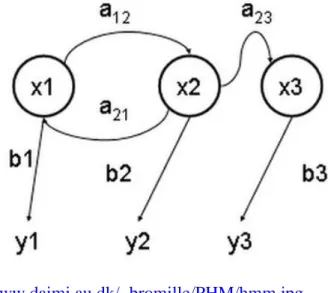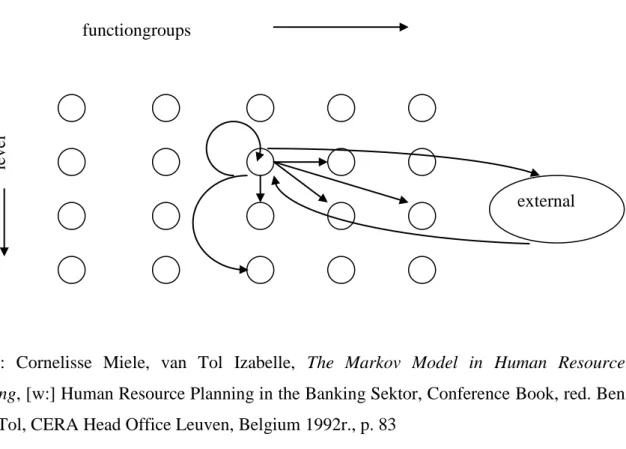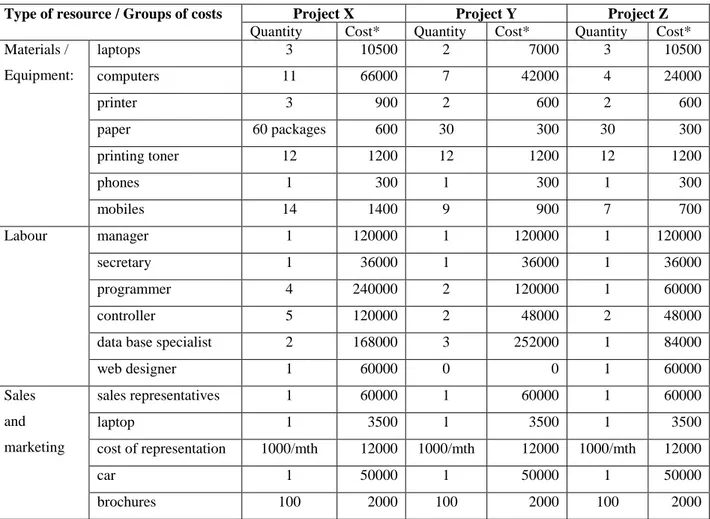Opublikowano w:
Leveraging Global Competitiveness for Organizational Excellence. Handbook of Management Cases
red. H.P. Gupta, T.Thatchenkery MacMillan & Institute of Management Education, New Delhi – Ghaziabad, 2010 ISBN:978-0230-33194-7, str. 353-362
Title: Intramobility versus cost centers in project structure – revised case
Katarzyna Czainska
Case overview
Presented paper is a revised version of the paper discussed during the 5th International Conference „Innovation in Management. Global Partnership” that took place in Poznan (Poland) in May 2010. In the paper author has describle pathological situation that appears in project and programm management; situation when projects and/or programms became separate kingdoms in the companies. As a consequence of not planned activity managers of each “program” and even each “project” focused on project/program results forgot about total profit of the company. Top managers of companies, who looked for project/program profitability also lost wide perspective of the whole company.
Keywords
Intramobility, game theory, project/program, project/program management, cost center, Markov Model
Frame work
Few years ago project management was on the most popular management styles, as one of the best solution for all organizational problems in big and contemporary companies. Like everything what is developed without reasonable plan and control, project management changed into chaotic net of relations that made companies unstable and in some cases extremely complicated. So, instead of review the reason of such situation, some companies made one step forward into deep forest. They implemented “program management”, it means
Poznan University College of Business, Niedziałkowskiego 18 Str., 61-579 Poznan/Poland,
that few projects were joined together as one program. From organizational perspective “programs” became separate kingdoms in the companies.
It seems to be obvious that every company should achieve profit of total activity. Also, based on the fundamental definition of organization, each part and element of the organization should be involved in reaching general goal of organization. But, in practice the game theory is more realistic and common. Managers responsible for profitability of particular units, projects or task do not care of the company’s profit in total, they want to present the best result of their work, their unit, their department, their project, etc. The paradox of their behavior is that it do not always means best results for the company. Such situation can be observed in example by analysis of resource management.
To present the problem correctly it is necessary to describe author’s point of view on management in general. It can be summarize in one sentence: if you run your business you must remember that it does not matter how professional you and your decisions are, you deal with human beings who mostly take care only of their own business. The best managers can use each employee’s motivation to make it useful for organization.
1.1. Organizational structure, projects and programs
To achieve its goals, coordinate all tasks and motivate people, just keep everything under control, each organization needs structure and hierarchy. Depending on the size of a company, structure can be more or less complicated, divided into divisions, units, departments, offices, etc. Each of these elements should collaborate, mostly in routine way, to create profit of the whole company.
Apart from routine and everyday work, time to time company has to start some unique and unusual activity. For such reason projects are established. Project as a separated cooperation body can be described by three factors [4;180]:
goal and related to this goal particular conditions and requirements, budget and costs limitation,
deadline.
Project can be also defined by following features [5;295]:
task – each project is established because of special tasks,
inimitable – there are no two equal projects event if their tasks are equal,
complexity – different people from different places, professions, organizations are involved in one project,
requirements,
autonomy – project is always new and not routine action in organization, high level of difficulty and risk.
If some company deal with few projects sometimes it decides to group it in programs. According to Rafał Mielczarek, the President of the Project Management Institute Poland [3;10]: a program is a collection of projects and operational activities, which are directed in fully coordinated way to achieve some business goal that is not possible to achieve if projects are directed separately. We can observe there a synergy effect of those projects. As an example from the IT branch, a program can cover projects of software and hardware implementation, organizational changes, end users’ training and human resource development, etc.
So, the core of the project is to separate particular resources (human, financial, material and information) to achieve some unusual goal (unusual from the company’s perspective), i.e. to invent, create, implement, restructure something, etc. Moreover, from the managerial point of view, “separate” means to create new units of a company lead by project/programm sponsors, learders, managers, etc. Chiefs of those units are allowed to represent company outside. On the other hand, owners of the company investing in each project/programm expect resultas and profits. That is why each project/programm should be treated like investment and called potential profit center. But, unfortunately instead of “profit centers” projects/programms could became only “cost centers”.
1.2. Cost centers
In contemporary corporation each unit, department, branch, project or program can be defined as cost centre. If so, manager of each organizational body is responsible for cost control in a cell that is under his/her management. Cost centre analysis [6] tries to attribute all costs involved in a particular activity to one ’location’ or ’cost centre’. To calculate costs involved in a particular activity it is necessary to calculate the cost of:
materials - all materials used directly (including wasted materials) and materials used indirectly (for instance packaging),
labour - all labour costs directly involved (including National Insurance and pensions, for instance) and the proportionate cost of any supporting labour (for instance administrative staff),
sales and marketing costs - regular, on-going costs of advertising and promotion of that activity’s product or service,
overheads - proportionate costs of regular expenses associated with that activity such as rent, rates, power, interest repayments, other charges,
additional costs - other costs solely attributable to the activity (for instance higher insurance costs for a new machine).
One of the methods of project evaluation is “earned-value control” that assesses performance of the project by combining cost and time [7;513]. Because, one of the most valiable resource in projects are people and cost of people is actually cost of their work, it is important to use above mentioned method. As N. Slack, S. Chambers, R. Johnston suggest, earned-value control ruther than measure the progress of the project in days, it measures it in the value of the work done [7;513].
Thinking about projects from the top management perspective means not only spending money for new one (i.e. hire new people for every project), but efficiently allocate resources among existing projects. Reffering to human management we can call it “intramobility”.
1.3. Intramobility – definition and types
Intramobility it is a mobility of employees into a company. It can be few forms of intramobility:
planned – as a element of strategy of human resource management in a company,
uncontrolled – when employees moves among units, departments, etc. using their connections.
Intramobility can have different types:
job rotation – moving an employee from one job to another but in the same unit, office or department of a company,
workplace rotation - moving an employee from one unit to another among the whole network of a company (i.e. from department X to department Y, from branch in Krakow to branch in Paris, from Office X on the Main Street to Office Y on the Big Street, etc.),
transfer – type of workplace rotation, but the difference is that in transfer employee should stay longer in a new place;
temporary delegation – moving an employee to a new place to fill lack of employees (i.e. during holidays or sickness of some employee),
horizontal promotion – moving an employee from one job to another, evaluated as more prestigious; employee stays on the same level of hierarchy,
vertical promotion – moving an employee to higher level of organizational hierarchy. Intramobility is basic activity related to project management. First of all, project teams are created from existing human resources, so specialists are moved from their units or departments to new, project environment. Secondly, because efficient human resource management should be a kind of allocation by mobility among projects and organization.
1.4. The Markov Model
One of the best, but not commonly known, tool for intramobility management is the Markov Model, that allows company to prepare strategy of human resource management, coordinate implementation of this strategy and observe not planned moves.
In 1827 British biologist Robert Brown observed polles in the drop of water by microscope and saw that they are in permanent, chaotic move. “Brownian movements” inspired Russian scientific physician Andriey Markov, who based on it presented kinetic gas-theory in 1906.
Figure 1 Markov Model
Sourse: www.daimi.au.dk/~bromille/PHM/hmm.jpg
Markov Model is commonly used in computer science, statistics and cardiology. In human resource management, Markov Model was implemented and developed by Ben van Tol, Izabelle van Tol, Cornelisse Miele [1] and Rob Dranfield [2].
According to Izabelle van Tol and Miele Cornelisse [1;83]: Developments on the side of manpower inventory (supply-side) is among others influenced by mobility, immigration, aging, competition and changers in the labour market. In case of mismatch (manpower
requirements are not in accordance with the man power inventory), policies can be reformulated over and over again until the mismatches is satisfactory small. The moderators supply, demand and strategic plans play a dominant role in the forecasting process of Marcov. Flows of employees between different groups or states (figure 2) in a given period of time are expressed as a matrix of transition probabilities. Groups or states may be defined in grades, levels, salary-scales, gender, age or skills.
Figure 2 The Markov Model in HRM
Source: Cornelisse Miele, van Tol Izabelle, The Markov Model in Human Resource Planning, [w:] Human Resource Planning in the Banking Sektor, Conference Book, red. Ben J. van Tol, CERA Head Office Leuven, Belgium 1992r., p. 83
1.5. Profit of a company versus profit of projects
At the beginning let’s analyze some case. The big IT company (called for the purpose of the paper “X”) runs many projects. Each project of this company represents cooperation with a particular customer, i.e.:
Project X – e-banking system for BANK X, Project Y – data base for FACTORY K, Project Z – e-shop for MARKET B.
Projects have their own resources as it was presented in table 1. From the company‘s perspective, following question should be asked: does all project have to be run in this same time? If not, is it possible to use same recourses by all projects? If yes, is it possible to share resources by better planning of tasks?
external
leve
l
Table 1 Project resources - case study
Type of resource / Groups of costs Project X Project Y Project Z
Quantity Cost* Quantity Cost* Quantity Cost* Materials / Equipment: laptops 3 10500 2 7000 3 10500 computers 11 66000 7 42000 4 24000 printer 3 900 2 600 2 600 paper 60 packages 600 30 300 30 300 printing toner 12 1200 12 1200 12 1200 phones 1 300 1 300 1 300 mobiles 14 1400 9 900 7 700 Labour manager 1 120000 1 120000 1 120000 secretary 1 36000 1 36000 1 36000 programmer 4 240000 2 120000 1 60000 controller 5 120000 2 48000 2 48000
data base specialist 2 168000 3 252000 1 84000
web designer 1 60000 0 0 1 60000 Sales and marketing sales representatives 1 60000 1 60000 1 60000 laptop 1 3500 1 3500 1 3500 cost of representation 1000/mth 12000 1000/mth 12000 1000/mth 12000 car 1 50000 1 50000 1 50000 brochures 100 2000 100 2000 100 2000
*/ for the purpose of this case, costs per year were presented in average prices in PLZ
Unfortunately, from a manager point of view it looks different. In analyzed company X, managers i.e. do not use human recourse from other projects, even if employee have nothing to do in particular moment. Why? Because of costs. If it sound ridicules, few example will prove it.
First case: manager of Project X needs three more controllers to finish test on time. In project Y and Z there are four controllers, that do not have any duties in the same time. According to Markov Model employees should be delegate to Project X. But, instead of delegate them, manager of Project X employed three students and paid them 1000 PLZ per each/per month. In manager’s opinion he saved 3000 PLZ per month, because controllers from other projects would cost him 6000 PLZ per month.
Second case: manager of Project Y do not need programmers during the whole period of projects (36 months), they will be useful only during 4 month. But manager took the best programmers from the company, and keeps them in his project to avoid situation that they
will be busy when he need them. So, people that could work in few projects will be involved only in one.
1.6. Conclusions
Described cases presents of course pathology in management. But, they should bring conclusions how good theories and tools of management are far from reality on organizational behavior. Top managers who implement project/program management should analyze efficiency and profitability of such solution not per project, but per total income. Markov Model seems to be one of the best solution helping top managers to coordinate cost management.
1.7. Issues for discussion and analysis
1. What is your opinion about intramobility among project teams? What advantages and disadvantages can appear for projects and for the company?
2. Do you know any methods or tools allowing top managers to control situation among projects?
3. Do you know any methods or tools allowing top managers to measure financial impact (consequences) of each projects for the total profitability of the company?
4. Is it possible to avoid games among project leaders?
5. What mechanisms known from organisational behaviour science can relay to manahement based on intramobility?
6. Create Markov Model presenting financial consequences of different human resourse management situations.
Reference:
[1] Cornelisse Miele, van Tol Izabelle, The Markov Model in Human Resource Planning, [in:] Human Resource Planning in the Banking Sector, Conference Book, red. Ben J. van Tol, CERA Head Office Leuven, Belgium 1992,
[2] Dranfield Rob, Human Resource Planning, Heinemann, (ebook) http://books.google.pl, [3] “Project Management Institute (PMI) – IT Project Specialist!”, [in:] Innovative Management Journal No.3, May 2009,
[4] Czainska Katarzyna, Innovation management project teams, [w:] Innovation in management, Poznańska Wyższa Szkoła Biznesu i Języków Obcych, Poznań 2006,
[5] Czainska Katarzyna, Knowledge, trust, innovation – the new view on project team management, IEA Press, International Ergonomics Association, Madison USA, 2007.
[6] http://www.wrexham.gov.uk/assets/pdfs/business/se_manual/62_cost_centre.pdf
[7] Slack Nigel, Chambers Stuart, Johnston Robert, Operations Management, Prentice Hall, Fifth Edition, 2007


